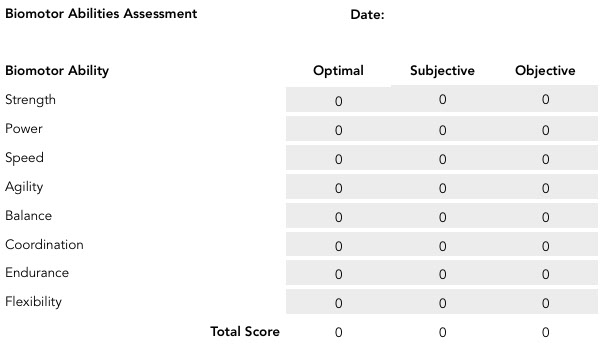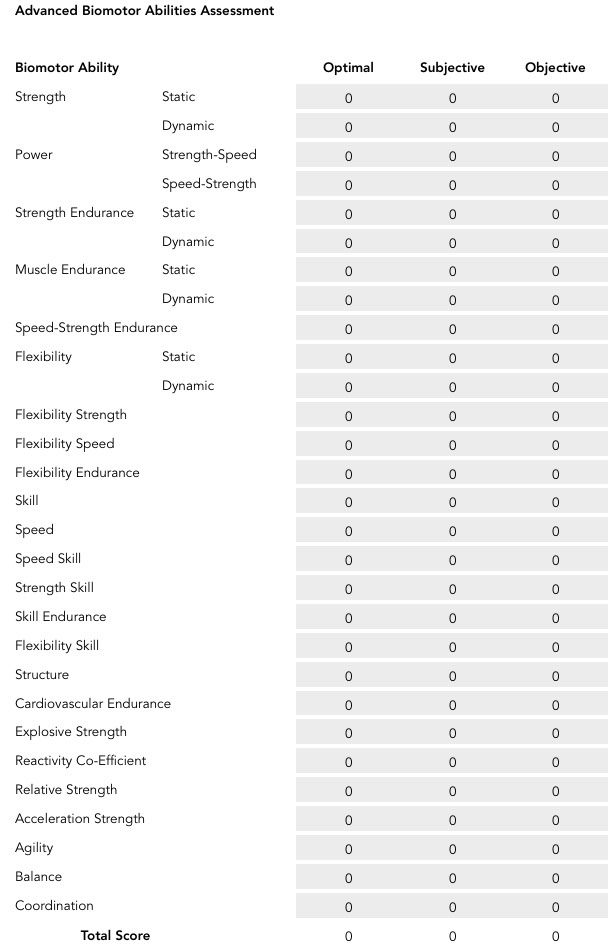To determine the development of biomotor abilities you first need to analyze the needs of the individual for their unique situation.
The first step is to first analyze the biomotor requirements for the individual’s unique situation. This itself can be subjective but in the case of an athlete you may use other activities as a baseline. For example when analyzing the strength requirements for a singles tennis player you could score it in comparison to an activity that would require the highest degree on strength such as powerlifting, where powerlifting would be a 10 and you would score the requirements of strength or optimal for tennis in comparison to this.
When assessing the individual’s current biomotor abilities there are two important means of assessing their current Biomotor Ability Status. .
- Subective
- Objective
From this assessment you can now determine which biomotor abilities may need greater attention compared to others by score comparison and priority of each of the biomotor abilities.
Clients may require the development of several biomotor abilities simultaneously. Care should be taken though, as attempting to over achieve with many clients may induce overtraining.
The training of biomotor abilities should be based on training experience and training age.
Clients with minimal training experience and a training age of 0-2 may respond well to developing several biomotor abilities at once. This is because their rate of development is high initially due to the fact that learning is predominantly neural.
Note that the less training experience (background) they have, the slower they will progress with development of any biomotor ability with the acceptation of good genetics. If an individual is the product of a long line of coordinated, athletic parents, grandparents, etc, etc, they may fool you with rapid progression.
If the client is well conditioned and has a diverse training background, they may handle development of multiple biomotor abilities at once. Care must be taken in the following situations:


